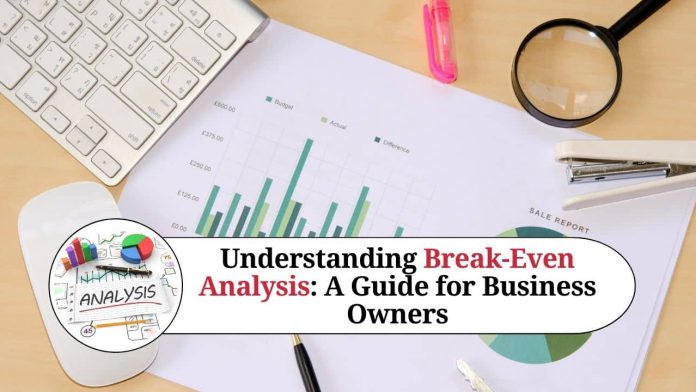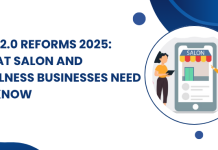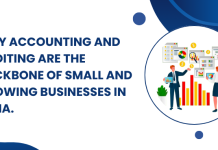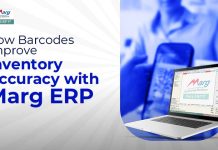For any business, knowing the financial performance of its operations is essential. Understanding the costs and revenue of the business can help determine its profitability of the business. One important tool in determining profitability is break-even analysis. Break-even analysis is a financial tool used to determine the minimum level of sales required for a business to cover its expenses. In this article, we will provide an in-depth guide on break-even analysis for business owners.
What is Break-Even Analysis?
Break-even analysis is a financial tool that helps businesses determine the minimum level of sales required to cover their expenses. In simpler terms, it is the point at which the total revenue is equal to the total costs. This point is known as the break-even point. Beyond this point, the business starts to make a profit.
Why is Break-Even Analysis Important?
Break-even analysis is an essential tool for any business owner. It helps in making informed decisions related to pricing, product offerings, and overall business strategy. By understanding the break-even point, a business owner can make better decisions on how to price their products or services, what level of sales is required to be profitable, and how to allocate resources to achieve the desired level of profitability.
How to Calculate Break-Even Point?
The break-even point can be calculated using a simple formula: Break-Even Point = Fixed Costs / (Price per Unit – Variable Costs per Unit)
Fixed Costs: These are costs that do not vary with the number of units produced. They include rent, salaries, utilities, and insurance.
Price per Unit: This is the price at which a unit of product or service is sold.
Variable Costs per Unit: These are costs that vary with the number of units produced. They include materials, labor, and other direct costs.
Let us consider an example to understand this better. A company has fixed costs of $50,000, a price per unit of $10, and variable costs per unit of $5. Using the formula mentioned above, the break-even point can be calculated as follows:
Break-Even Point = $50,000 / ($10 – $5) Break-Even Point = 10,000 units
This means that the company needs to sell 10,000 units to break even.
Interpreting Break-Even Analysis
Once the break-even point is determined, it is essential to interpret the results. If the current level of sales is less than the break-even point, the business is operating at a loss. If the current level of sales is more than the break-even point, the business is profitable. In such a scenario, the excess revenue generated can be used to reinvest in the business, pay off debt, or distribute as dividends.
It is important to note that break-even analysis is not a one-time exercise. Business conditions are constantly changing, and as a result, the break-even point may change as well. Therefore, it is recommended to perform a break-even analysis periodically to ensure that the business is on track to achieving its financial goals.
Limitations of Break-Even Analysis
While break-even analysis is an essential tool, it does have its limitations. Firstly, it assumes that the sales mix remains constant. In reality, the sales mix may vary, and this can affect the break-even point. Secondly, it assumes that the fixed costs remain constant. In reality, fixed costs may change due to changes in the business environment. Lastly, it assumes that variable costs per unit remain constant. In reality, variable costs may increase due to changes in the cost of materials, labor, or other direct costs.
Conclusion
In conclusion, break-even analysis is an essential tool for any business owner to determine the minimum level of sales required to cover its expenses. It helps in making informed decisions related to pricing, product offerings, and overall business strategy. By understanding the break-even point, a business owner can make better decisions on how to allocate resources to achieve the desired level of profitability. However, it is important to note that break-even analysis is not a one-time exercise and should be performed periodically to ensure that the business is on track to achieving its financial goals.
Other related post: Section 144B of the Income Tax Act
Frequently Asked Questions:
Q.1 What is break-even analysis?
A: Break-even analysis is a financial tool used to determine the minimum amount of revenue a business needs to generate to cover its costs. It is a way of measuring the financial viability of a project or business by calculating the break-even point, which is the point where total revenue equals total costs.
Q.2 Why is break-even analysis important?
A: Break-even analysis is important because it helps businesses determine whether a project or product is financially feasible. By calculating the break-even point, businesses can see whether they need to increase sales or cut costs to make a profit. It can also help businesses make informed decisions about pricing, production, and marketing strategies.
Q.3 How is break-even analysis calculated?
A: Break-even analysis is calculated by dividing total fixed costs by the contribution margin per unit, which is the selling price per unit minus the variable cost per unit. The resulting number is the break-even point in units. To calculate the break-even point in dollars, simply multiply the break-even point in units by the selling price per unit.
Q:4 What is the break-even point?
A: The break-even point is the level of sales at which total revenue equals total costs. It is the point at which a business is neither making a profit nor incurring a loss. Once a business has reached its break-even point, any additional sales will result in a profit.
Q:5 What are fixed costs?
A: Fixed costs are expenses that do not vary with the level of production or sales. Examples of fixed costs include rent, salaries, insurance, and equipment leases.
Q.6 What are variable costs?
A: Variable costs are expenses that vary with the level of production or sales. Examples of variable costs include materials, labor, and shipping costs.
Q.7 Can break-even analysis be used for service-based businesses?
Yes, break-even analysis can be used for service-based businesses as well as product-based businesses. In the case of service-based businesses, the variable costs may include things like labor and supplies, while fixed costs may include rent and utilities.
Q.8 Can break-even analysis be used for non-profit organizations?
Yes, break-even analysis can be used for non-profit organizations as well as for-profit businesses. In the case of non-the break-even point may be calculated in terms of the number of donations or grants needed to cover the organization’s expenses.
Q.9 What are some limitations of break-even analysis?
Break-even analysis is based on several assumptions, including a fixed cost structure, a constant selling price, and a linear relationship between sales and costs. These assumptions may not hold in all cases, which means that break-even analysis may not always provide an accurate picture of a business’s financial situation. Additionally, break-even analysis does not take into account factors such as competition, market trends, or external economic factors that may impact a business’s profitability.




















